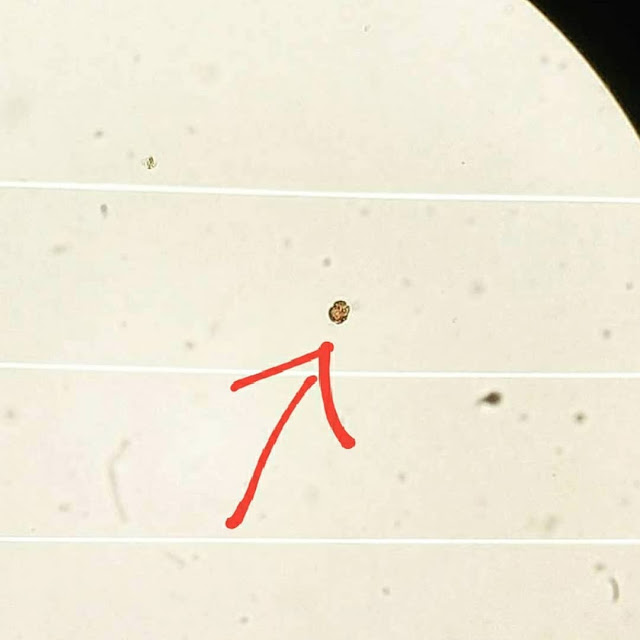La marea roja de Florida es causada por un alga microscópica llamada Karenia brevis, o K. brevis, (que se muestra aquí) que produce una toxina que puede afectar el sistema nervioso central de los peces, aves, mamíferos y otros animales, y también causa irritación respiratoria. en humanos.
• En concentraciones altas (llamadas floraciones), el organismo puede decolorar el agua -a veces roja, verde claro o oscura o marrón.
• Los efectos en la salud humana incluyen casos de intoxicación humana por intoxicación neurotóxica por mariscos (NSP) e impactos en la función respiratoria humana.
• Los impactos ambientales incluyen muertes masivas de peces, mamíferos marinos, tortugas marinas y mortalidad de aves marinas, e impactos en las comunidades bentónicas, incluidos los pastos marinos y la extinción de comunidades de coral.
Florida Red Tide is caused by a microscopic alga called Karenia brevis, or K. brevis, (pictured here) which produces a toxin that can affect the central nervous system of fish, birds, mammals, and other animals, as well as cause respiratory irritation in humans.
•At high concentrations (called blooms), the organism may discolor the water –sometimes red, light or dark green, or brown.
•Human health effects include cases of human intoxication from neurotoxic shellfish poisoning (NSP) and impacts on human respiratory function.
•Environmental impacts include massive fish kills, marine mammal, sea turtle and sea bird mortalities, and impacts on benthic communities including sea grass and coral community die-offs.
•Harmful Algal Blooms (or HABs) such as #redtide occur worldwide. However, K. brevis is found almost exclusively in the Gulf of Mexico but has been found on the east coast of Florida and off the coast of North Carolina.
•Red tide was first officially recorded in Florida in 1844, but reports along the Florida Gulf Coast by Spanish explorers date back as far as the 1500s.
• Red Tide Blooms can last days, weeks, or months and can also change daily due to wind conditions. Onshore winds normally bring it near the shore whereas offshore winds drive it out to sea.
•No single factor causes a red tide bloom. It needs Biology (the organisms), Chemistry (appropriate conditions and nutrients for growth), Physics (concentrating and transport mechanisms). Tests are being conducted to see if coastal nutrients enhance or prolong blooms, however there are no conclusive results as of yet.

No hay comentarios:
Publicar un comentario